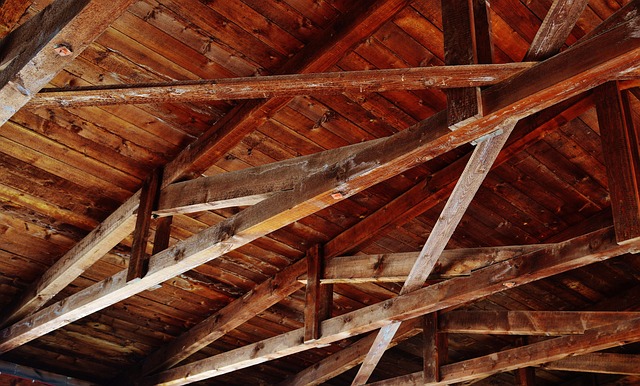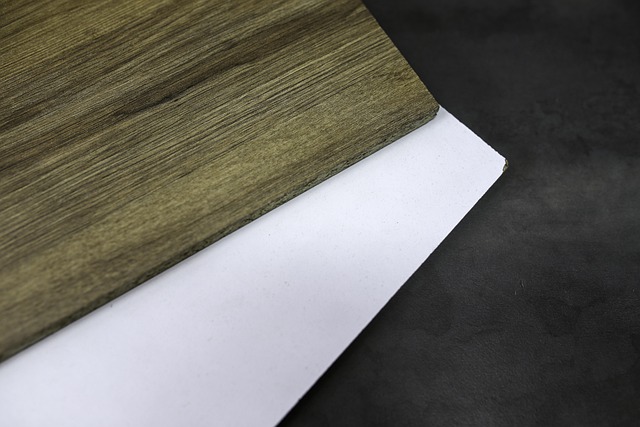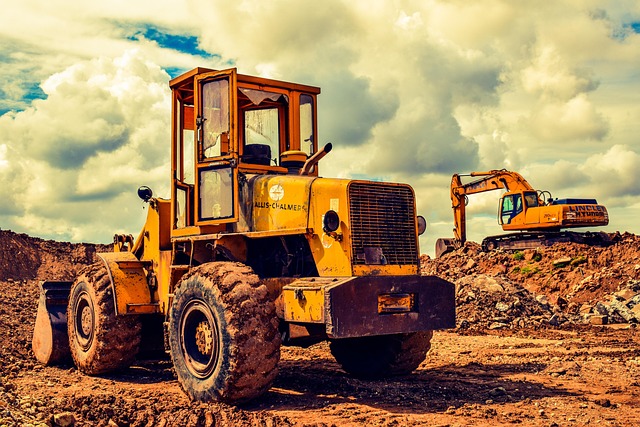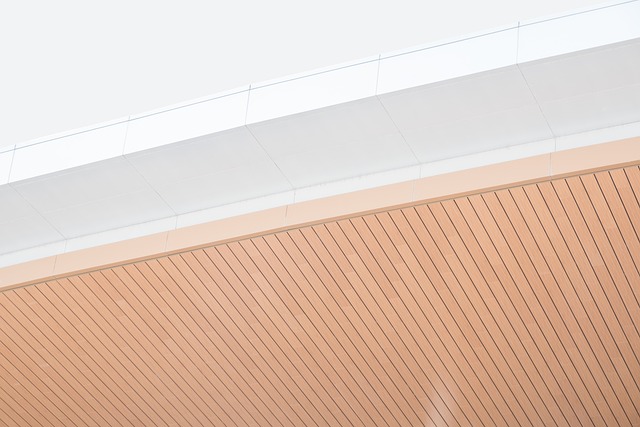Ensuring Structural Integrity with Laminated Wood Beams for Construction

Laminated wood beams for construction offer enhanced strength and versatility compared to traditional timber, with customizable dimensions suitable fo…….
In the ever-evolving world of construction, materials science plays a pivotal role in shaping the industry’s future. One such innovative material gaining significant traction is laminated wood beams, specifically tailored for construction purposes. This article aims to provide an in-depth exploration of this remarkable product, its applications, and its profound impact on the global construction sector. By delving into various aspects, from historical roots to technological innovations, we will uncover why laminated wood beams are not just a trend but a game-changer in modern construction practices.
Definition: Laminated wood beams, also known as engineered wood beams or structural composite lumber, are high-performance building components constructed by laminating multiple layers of wood veneers or strands with adhesives. This process creates a strong, durable, and dimensionally stable beam suitable for various construction needs.
Core Components:
Historical Context: The concept of engineered wood products dates back to the early 20th century when inventors sought alternatives to traditional solid timber. Over time, advancements in adhesive technology and manufacturing processes led to the development of laminated wood beams as we know them today. This innovation aimed to address the challenges posed by limited timber resources and the need for versatile building materials.
Significance: Laminated wood beams offer several advantages over conventional solid wood or steel:
Laminated wood beam technology has left its mark worldwide, with varying adoption rates across regions:
| Region | Adoption Rate (%) | Driving Factors |
|---|---|---|
| North America | 75 | Abundant forest resources, stringent building codes, and a focus on sustainable construction. |
| Europe | 60 | Strict environmental regulations and a well-established construction industry embracing innovation. |
| Asia Pacific | 45 | Rapid urbanization, growing middle class, and government initiatives promoting green buildings. |
| Middle East & Africa | 30 | Increasing infrastructure development, particularly in urban centers, with a focus on cost-effectiveness. |
Trends Shaping the Industry:
The economic landscape surrounding laminated wood beams reveals a promising story:
Market Dynamics: The global engineered wood market, of which laminated wood beams are a significant segment, is projected to grow at a CAGR of 6% from 2022 to 2030. This growth is attributed to the increasing demand for sustainable and cost-effective construction materials.
Investment Patterns: Governments worldwide are investing in green infrastructure, providing substantial funding for projects utilizing laminated wood beams. For instance, the European Union’s “Green Deal” aims to decarbonize construction, offering incentives for the adoption of eco-friendly materials.
Cost Analysis: While initial costs may be higher than traditional building materials, the long-term savings in construction time and reduced maintenance expenses make laminated wood beams a cost-effective choice.
Technological innovations have significantly contributed to the evolution of laminated wood beam technology:
Adhesive Formulations: Researchers have developed advanced adhesives with superior bonding strength, improved weather resistance, and enhanced fire safety properties. These adhesives enable the creation of beams with even higher load capacities.
Manufacturing Processes: The adoption of digital technologies in manufacturing has led to precision cutting, improved lamination techniques, and automated quality control systems, ensuring consistent product quality.
Digital Design Tools: Advanced CAD (Computer-Aided Design) software allows engineers to optimize beam designs, enabling efficient structural analysis and customized solutions for unique construction challenges.
Governments worldwide play a crucial role in shaping the industry through various policies and regulations:
Building Codes: Many countries have incorporated specific provisions for engineered wood products, including laminated wood beams, to ensure safety and quality standards. These codes dictate allowable span lengths, load capacities, and installation methods.
Environmental Regulations: Strict environmental policies drive the demand for sustainable construction materials like laminated wood beams, as they offer a lower carbon footprint compared to traditional concrete and steel.
Incentives and Subsidies: Several governments provide financial incentives, grants, or tax breaks for using eco-friendly building materials, encouraging the adoption of laminated wood beams in green construction projects.
Despite its numerous advantages, laminated wood beams face certain challenges and criticisms:
Regional Availability: The availability of high-quality laminated wood beams may vary across regions due to differences in forest resources and manufacturing capabilities. This issue is particularly relevant in areas with limited timber access.
Cost Perception: In some markets, there is a misconception that laminated wood beams are more expensive than conventional materials. However, long-term cost savings and environmental benefits often outweigh initial investment concerns.
Moisture Resistance: While modern adhesives have significantly improved moisture resistance, certain harsh environmental conditions or prolonged submersion can still affect the integrity of laminated beams.
Strategies to Overcome Challenges:
Case Study 1: The Green Skyline of Stockholm
In Stockholm, Sweden, the city’s urban renewal project, “Green Stockholm,” incorporated laminated wood beams in its flagship residential tower, SkyHouse. This 80-story building boasts a stunning design with large windows and open spaces, all while achieving remarkable energy efficiency. The use of laminated wood for structural support allowed for reduced concrete usage, contributing to the project’s sustainability goals.
Key Takeaways:
Case Study 2: Sustainable School Construction in New Zealand
A primary school in rural New Zealand embraced laminated wood beams for its construction, setting a new standard for eco-friendly education facilities. The school’s design incorporated large, open classrooms with exposed laminated wood trusses, creating a bright and airy learning environment. This project not only reduced the carbon footprint of the building but also provided students with a unique connection to nature.
Lessons Learned:
The future of laminated wood beams for construction holds immense promise, with several growth areas and emerging trends on the horizon:
Hybrid Structures: The integration of laminated wood with other advanced materials will likely continue, leading to hybrid structures offering unparalleled strength, durability, and energy efficiency.
3D Printing and Additive Manufacturing: 3D printing technology can revolutionize beam manufacturing, enabling customized designs and faster production times. This method is particularly useful for complex geometric shapes.
Smart Buildings: Laminated wood beams equipped with sensors and IoT (Internet of Things) capabilities could become integral components of smart buildings, facilitating energy monitoring and efficient facility management.
Global Market Expansion: With increasing awareness of sustainable construction practices, the global market is expected to witness significant growth, especially in regions with emerging economies and a focus on green infrastructure.
Laminated wood beams have emerged as a powerful tool in the architect’s and engineer’s arsenal, offering a sustainable, cost-effective, and aesthetically pleasing alternative to traditional construction materials. As the industry continues to evolve, these engineered lumber products will play an increasingly vital role in shaping the built environment. From addressing global sustainability challenges to enabling innovative architectural designs, laminated wood beams are not just a material but a catalyst for positive change in the construction sector.
Q: Are laminated wood beams stronger than steel?
A: In many cases, laminated wood beams can match or even exceed the strength of steel, especially when designed and installed correctly. They offer superior dimensional stability and are lighter weight, making them suitable for a wide range of applications.
Q: How do I know if my region has enough timber resources for laminated wood beam production?
A: Regional timber availability can be assessed through industry reports and government data. Many countries with abundant forest resources have established sustainable harvesting practices to ensure long-term supply for engineered wood product manufacturing.
Q: Can laminated wood beams withstand fire better than traditional lumber?
A: Yes, modern adhesives and improved manufacturing techniques significantly enhance the fire resistance of laminated wood beams. They can provide excellent structural integrity even under extreme conditions, making them a safe choice for high-risk areas.
Q: Are there any specific installation requirements for laminated wood beams?
A: Proper installation is crucial for optimal performance. This includes following manufacturer guidelines, using appropriate fastening methods (nails or screws), and ensuring proper spacing to prevent deflection. Local building codes should also be consulted for specific installation requirements.

Laminated wood beams for construction offer enhanced strength and versatility compared to traditional timber, with customizable dimensions suitable fo…….

Laminated wood beams, created through layering thin sheets of wood, offer enhanced strength and sustainability in construction. They provide a superio…….

Laminated wood beams for construction offer superior strength and versatility compared to traditional materials like steel or solid lumber. Their mult…….

Laminated wood beams provide a durable and versatile solution for construction, offering superior strength and structural integrity over traditional m…….

Laminated Wood Beams for Construction offer enhanced strength and aesthetic appeal, ideal for structural issues where traditional beams fall short. Ke…….

Laminated wood beams for construction offer a strong, versatile alternative to traditional methods. Certified products, inspected for damage and bond…….

Laminated Wood Beams for Construction revolutionize building with enhanced strength, reduced environmental impact, and efficient manufacturing. The in…….

Laminated wood beams for construction offer a sustainable, cost-effective, and aesthetically pleasing alternative to steel. With superior strength-to-…….

Laminated wood beams offer a strong, sustainable, and cost-effective construction solution with customizable dimensions, exceptional strength, and fir…….

Laminated Wood Beams (LWBs) offer superior structural strength, longevity, and aesthetic appeal for construction projects. Their multi-layered design…….